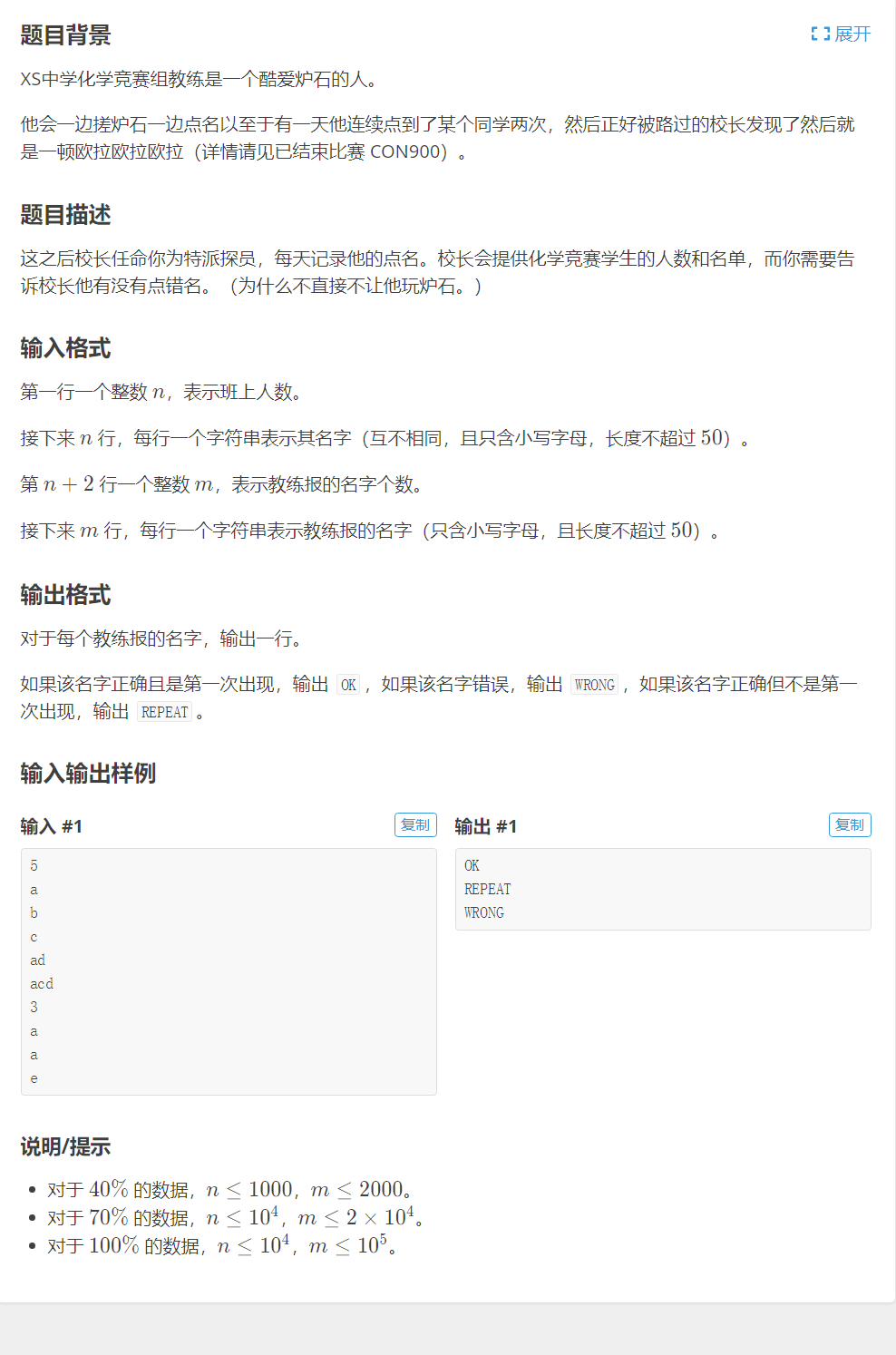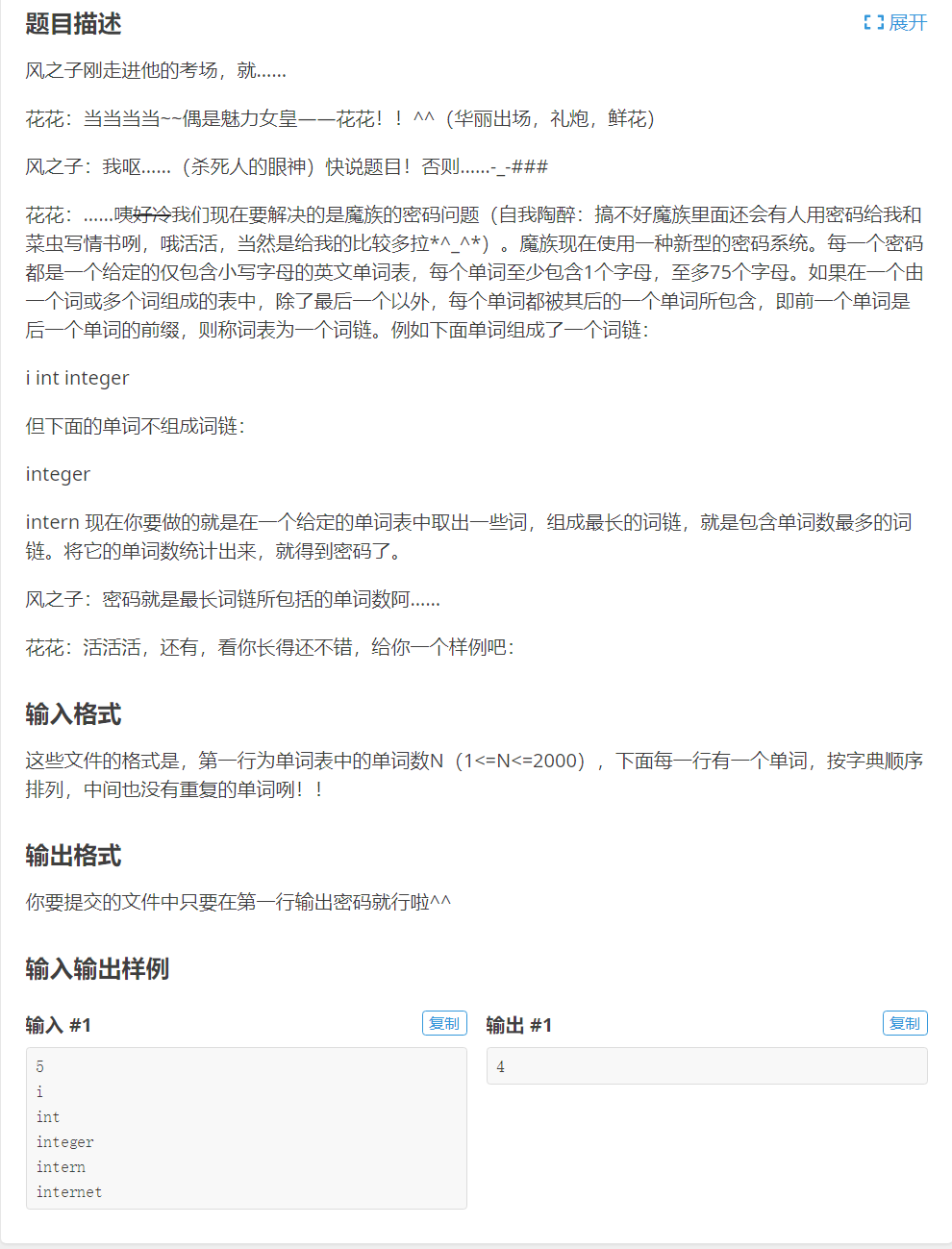1, Basic concepts
Trie (dictionary tree) is a multi tree structure used to realize fast string retrieval. Each node of tier has several character pointers. If a character c is scanned when inserting or retrieving a string, it will follow the C character pointer of the current node to the node pointed to by the pointer.
initialization:
an empty Trie contains only one root node, and the character pointer of this point points to null.
insert:
when we need to insert a string S, we make a pointer p initially point to the root node. Then, scan each character c in S in turn:
(1) if the c character pointer of P points to an existing node Q, let P=Q.
(2) if the c character pointer of P points to null, create a new node Q, make the c character pointer of P point to Q, and then make P=Q.
when the character in S is scanned, mark it as the end of a string on the current node P.
search:
when we need to retrieve whether a string S exists in Trie, we make a pointer P point to the root node at first, and then scan each character c in S in turn:
(1) if the c character pointer of P points to null, it indicates that S has not been inserted into Trie and ends the retrieval.
(2) if the c character pointer of P points to an existing node Q, let P=Q.
when the characters in S are scanned, if the current node P is marked as the end of a string, it indicates that S exists in Trie; otherwise, it indicates that S has not been inserted into Trie.
2, Example 1: P2580 so he started the wrong roll call
This question can be written directly with STL heavy map. For exercise, use dictionary tree.
Question surface:

code:
#include<iostream>
#include<cstdio>
#include<cstdlib>
#include<cstring>
#include<string>
using namespace std;
const int maxn=10100;
const int len=50;
int t[maxn*len][26];
int ed[maxn*len];
int tot=1,root=1;
char str[maxn];
void _insert(void)
{
int slen=strlen(str+1);
int p=root;
for(int i=1;i<=slen;i++)
{
int ch=str[i]-'a';
if(!t[p][ch]) t[p][ch]=++tot;
p=t[p][ch];
}
ed[p]=1;
}
int _find(void)
{
int slen=strlen(str+1);
int p=root;
for(int i=1;i<=slen;i++)
{
int ch=str[i]-'a';
if(!t[p][ch]) return 0;
p=t[p][ch];
}
return ed[p]++;
}
int main(void)
{
int n;
scanf("%d",&n);
for(int i=1;i<=n;i++)
{
scanf("%s",str+1);
_insert();
}
int m;
scanf("%d",&m);
for(int i=1;i<=m;i++)
{
scanf("%s",str+1);
int pos=_find();
if(pos==0) printf("WRONG\n");
else if(pos==1) printf("OK\n");
else printf("REPEAT\n");
}
return 0;
}
III. example 2: P1481 demon family password
Question surface:

Code:
#include<iostream>
#include<cstdio>
#include<cstdlib>
#include<cstring>
#include<string>
using namespace std;
const int maxn=2100;
const int len=75;
int t[maxn*len][26];
int ed[maxn*len];
int tot=1,root=1;
char str[maxn];
void _insert(void)
{
int slen=strlen(str+1);
int p=root;
for(int i=1;i<=slen;i++)
{
int ch=str[i]-'a';
if(!t[p][ch]) t[p][ch]=++tot;
p=t[p][ch];
}
ed[p]=1;
}
int dfs(int p)
{
if(p==0) return 0;
int maxx=0;
for(int i=0;i<26;i++)
{
maxx=max(maxx,dfs(t[p][i])+ed[p]);
}
return maxx;
}
int main(void)
{
int n;
scanf("%d",&n);
for(int i=1;i<=n;i++)
{
scanf("%s",str+1);
_insert();
}
printf("%d\n",dfs(root));
return 0;
}